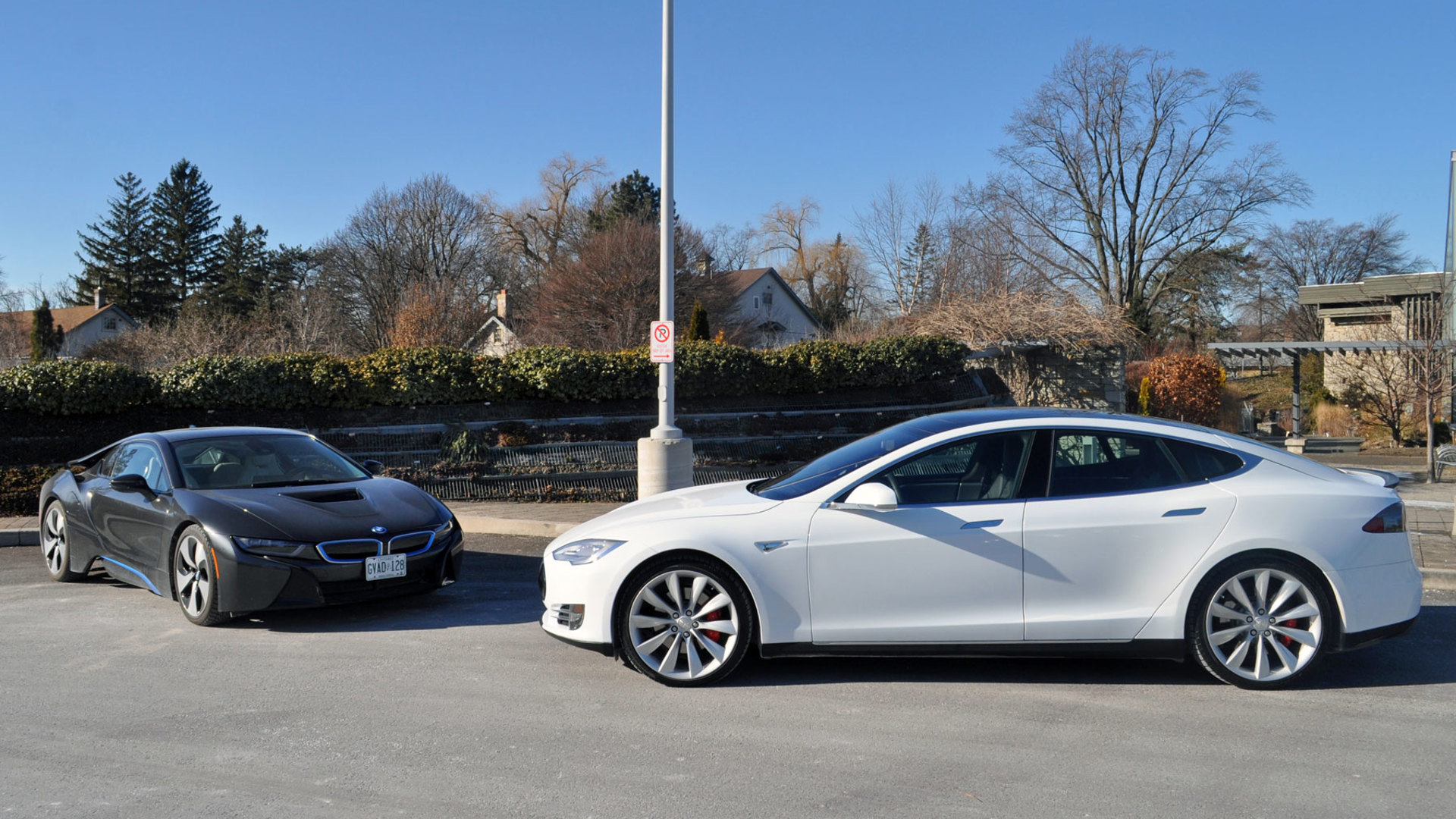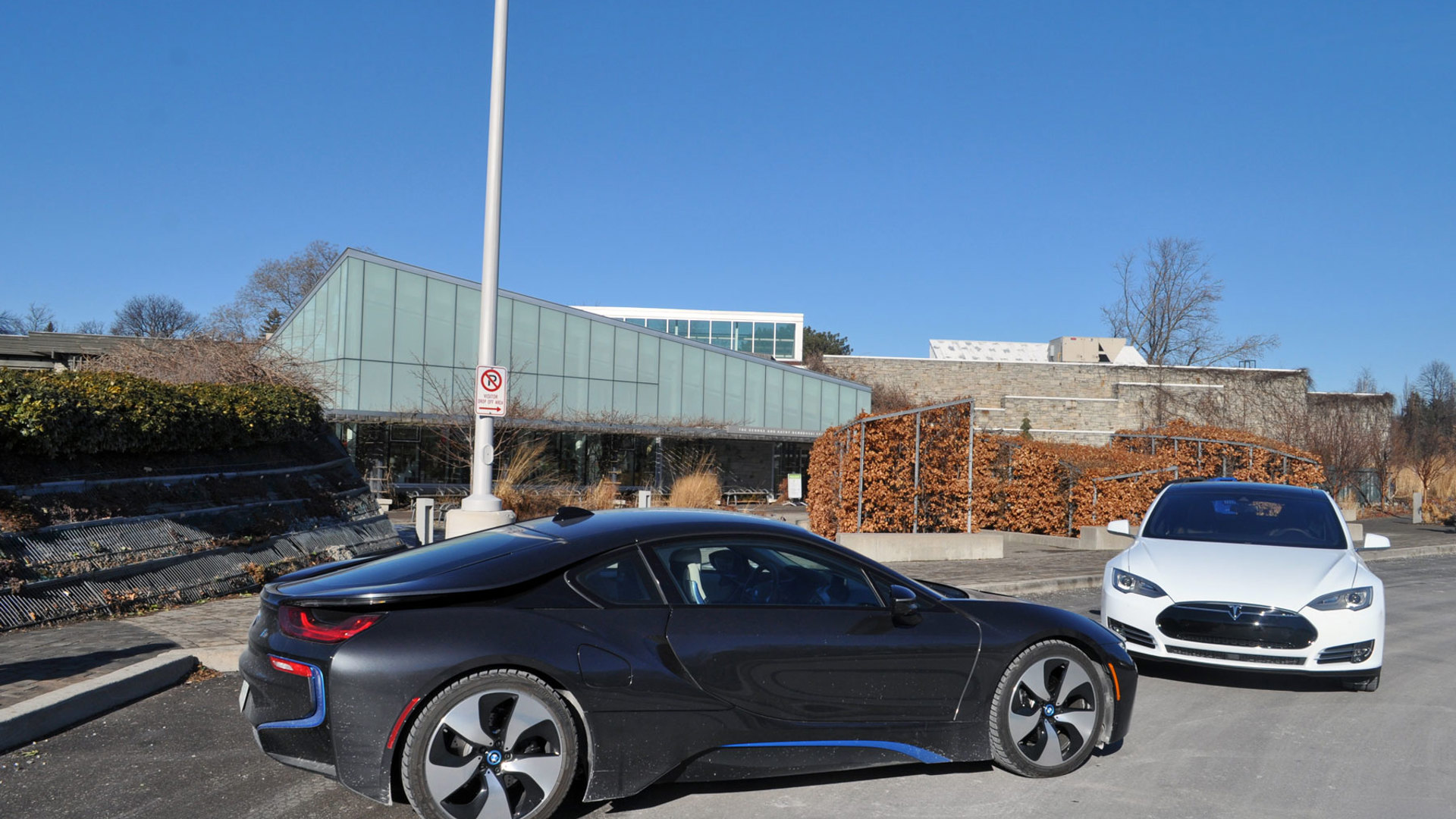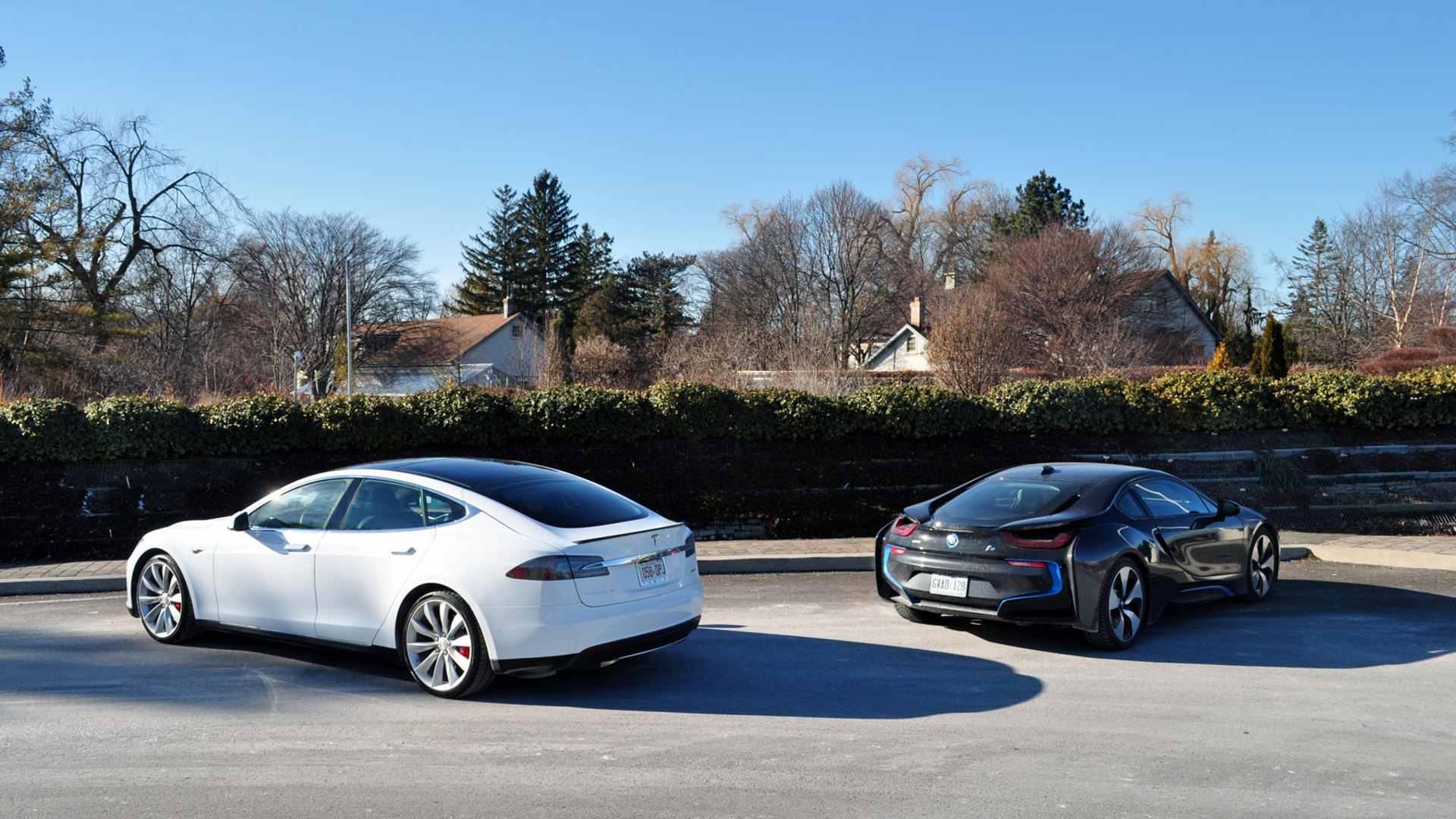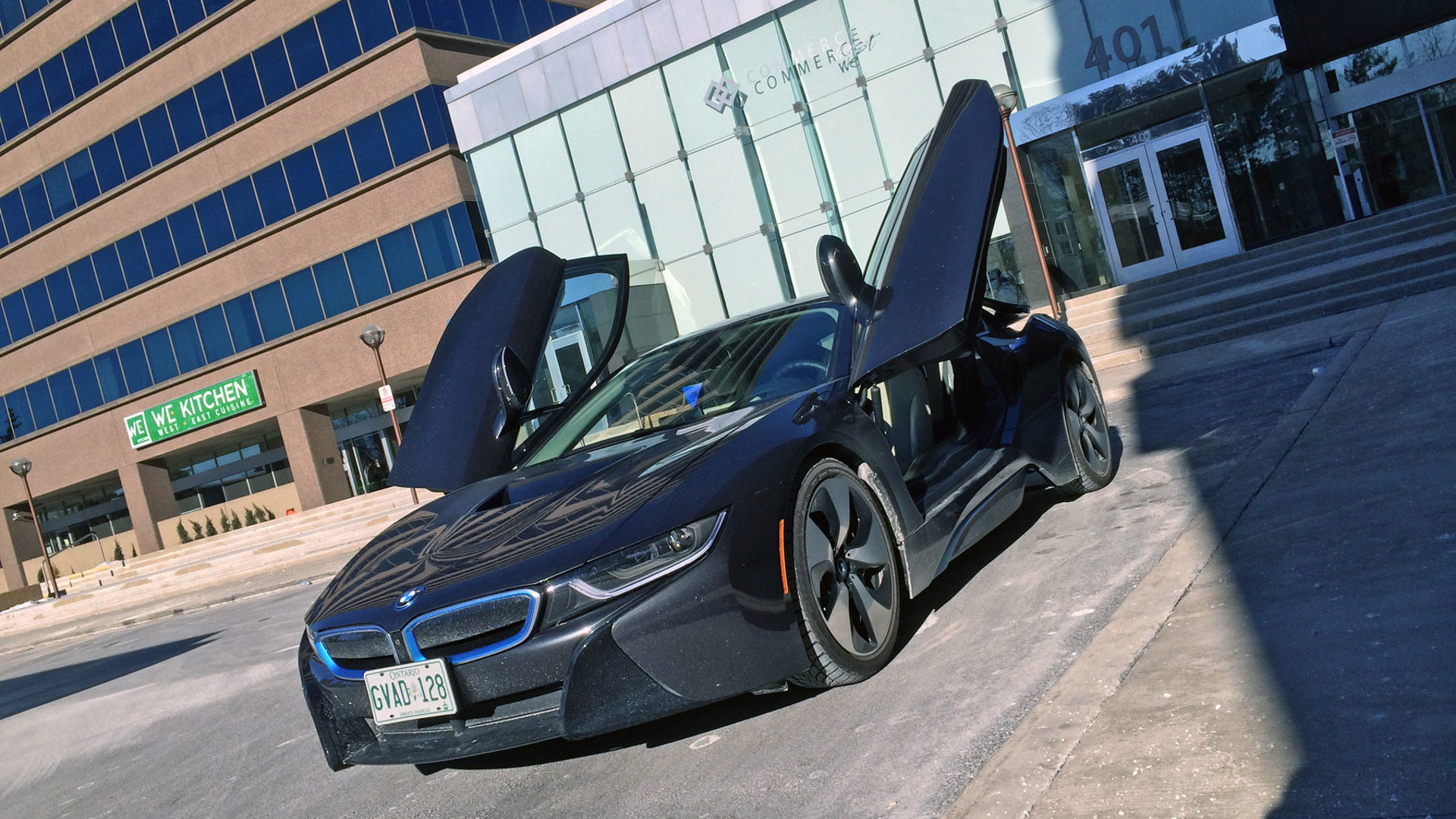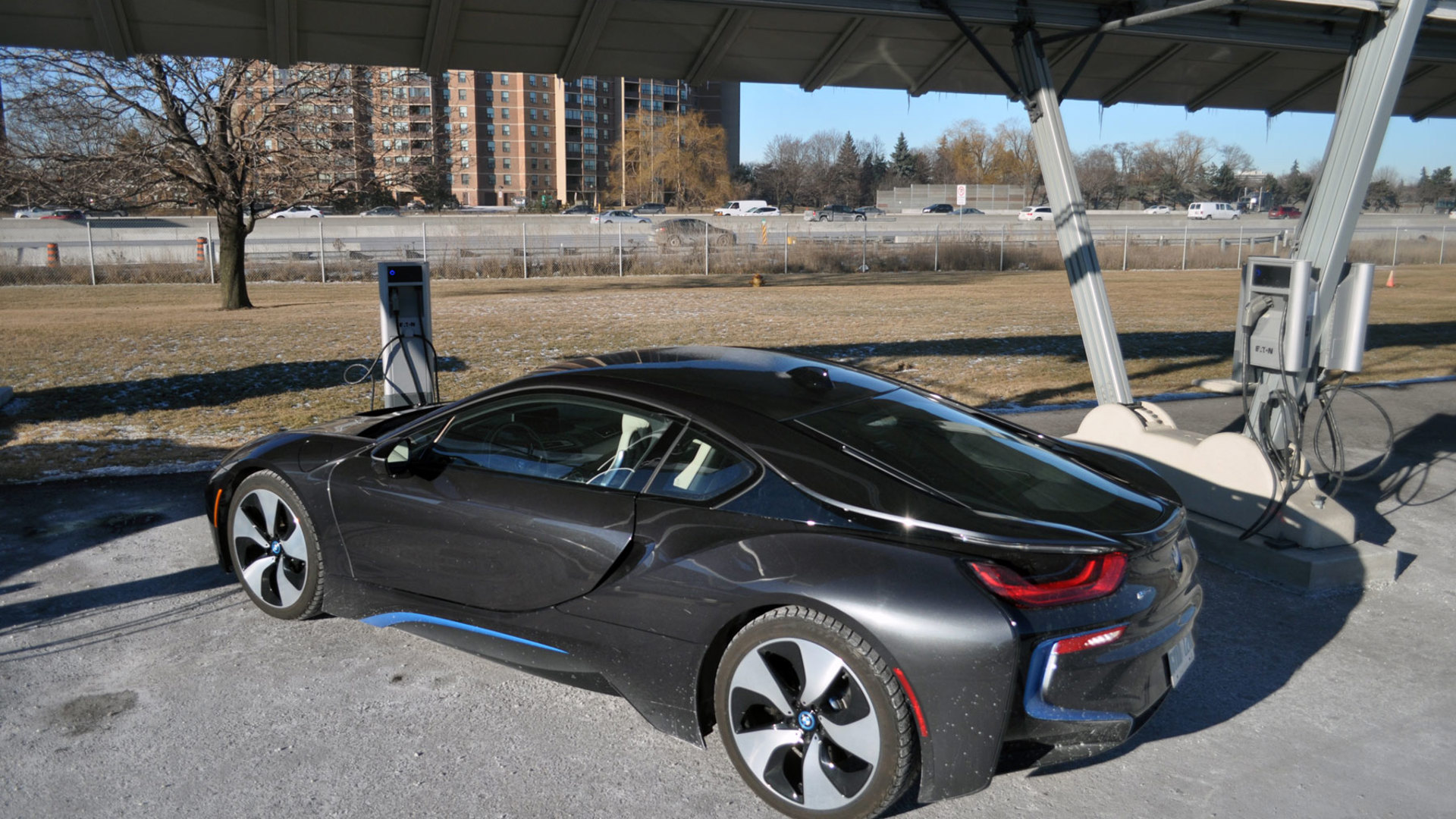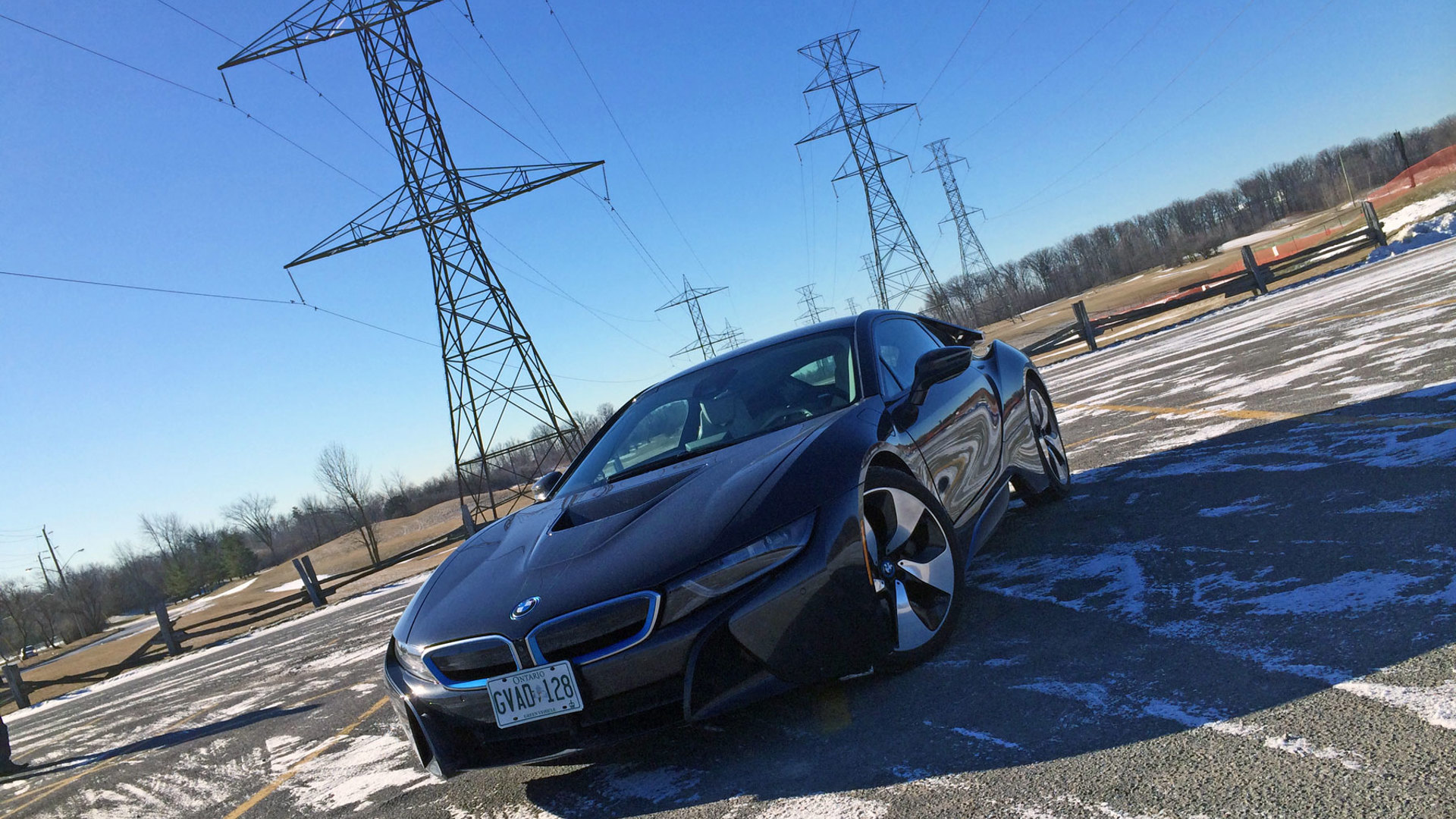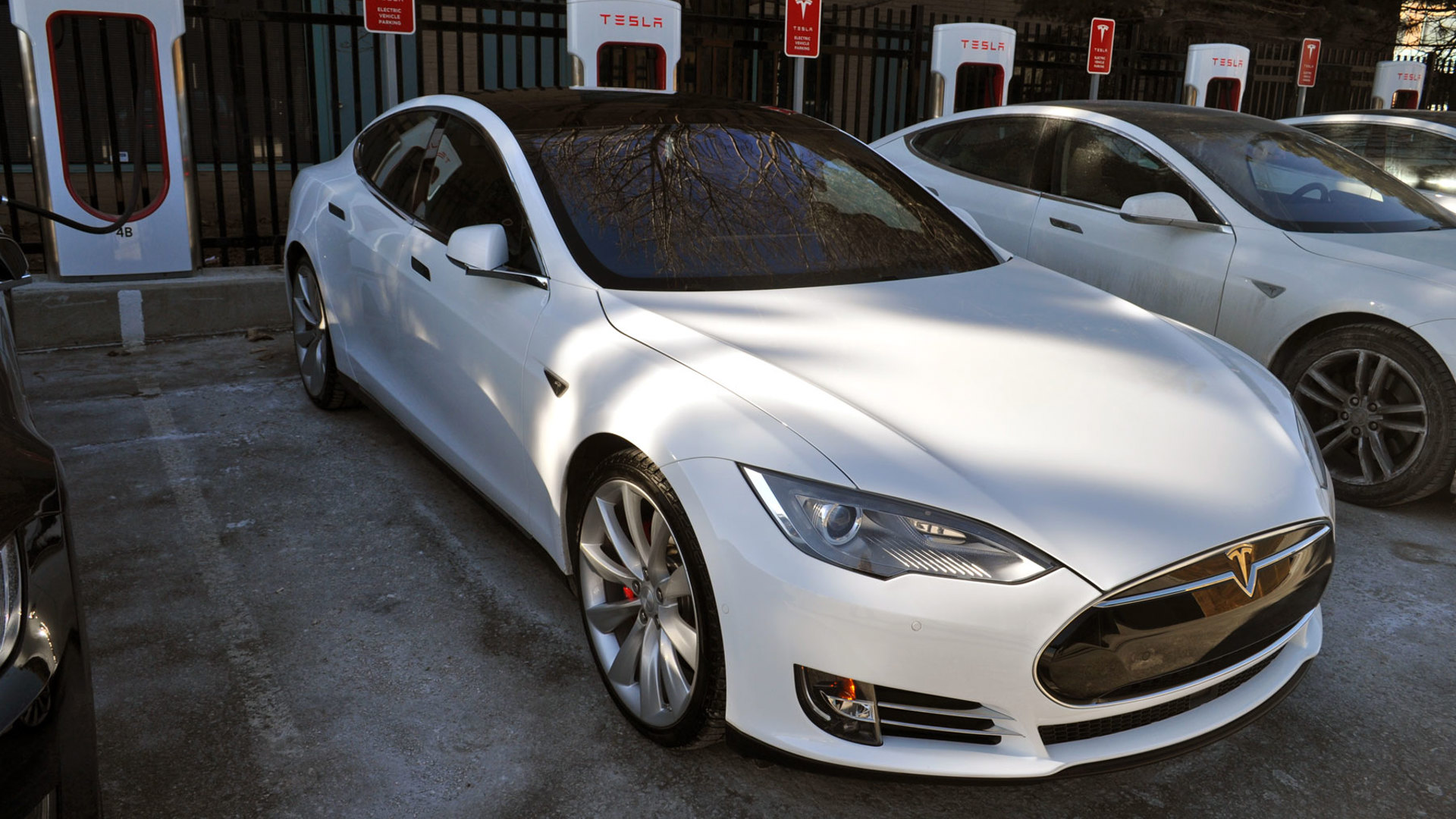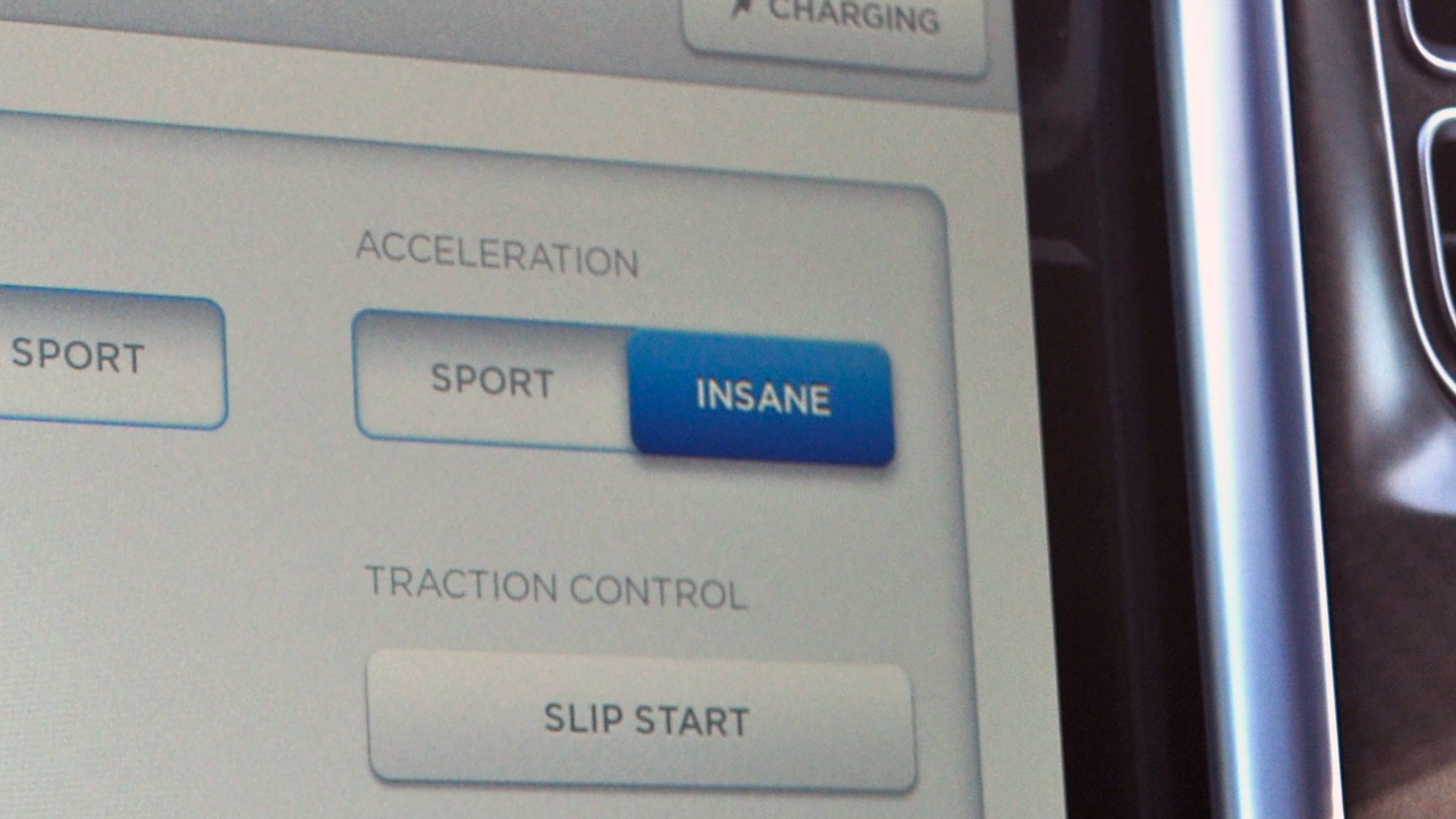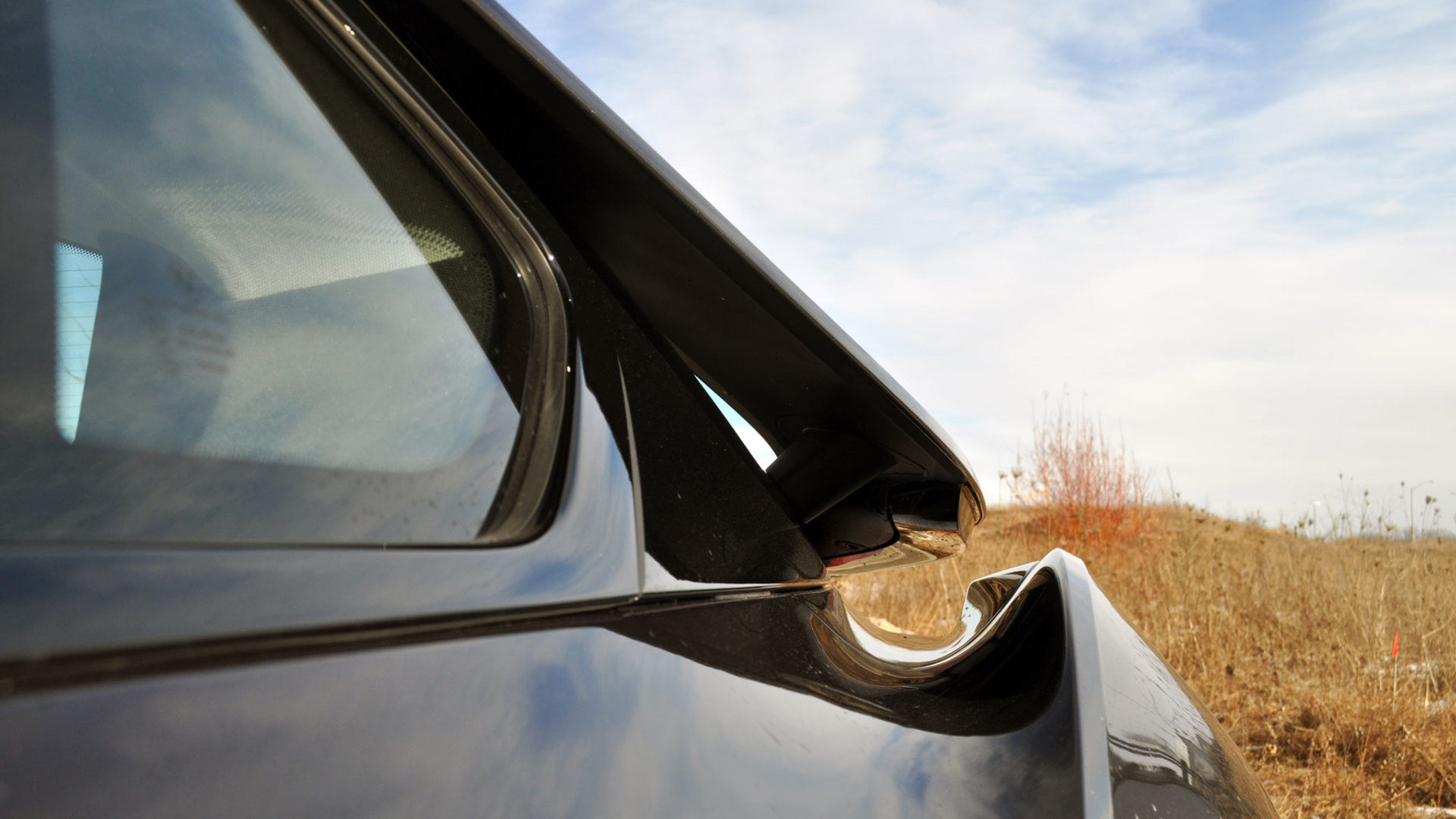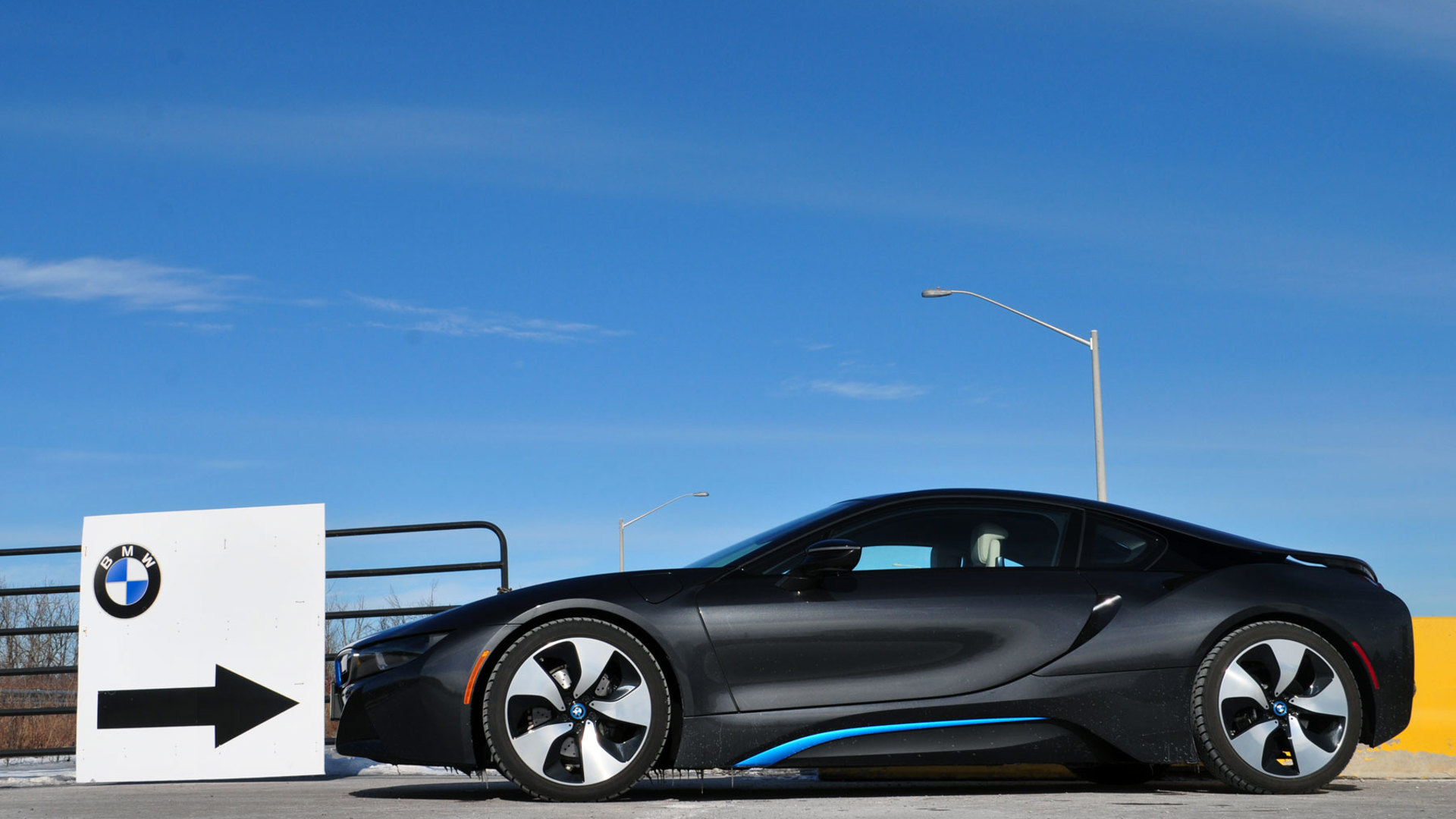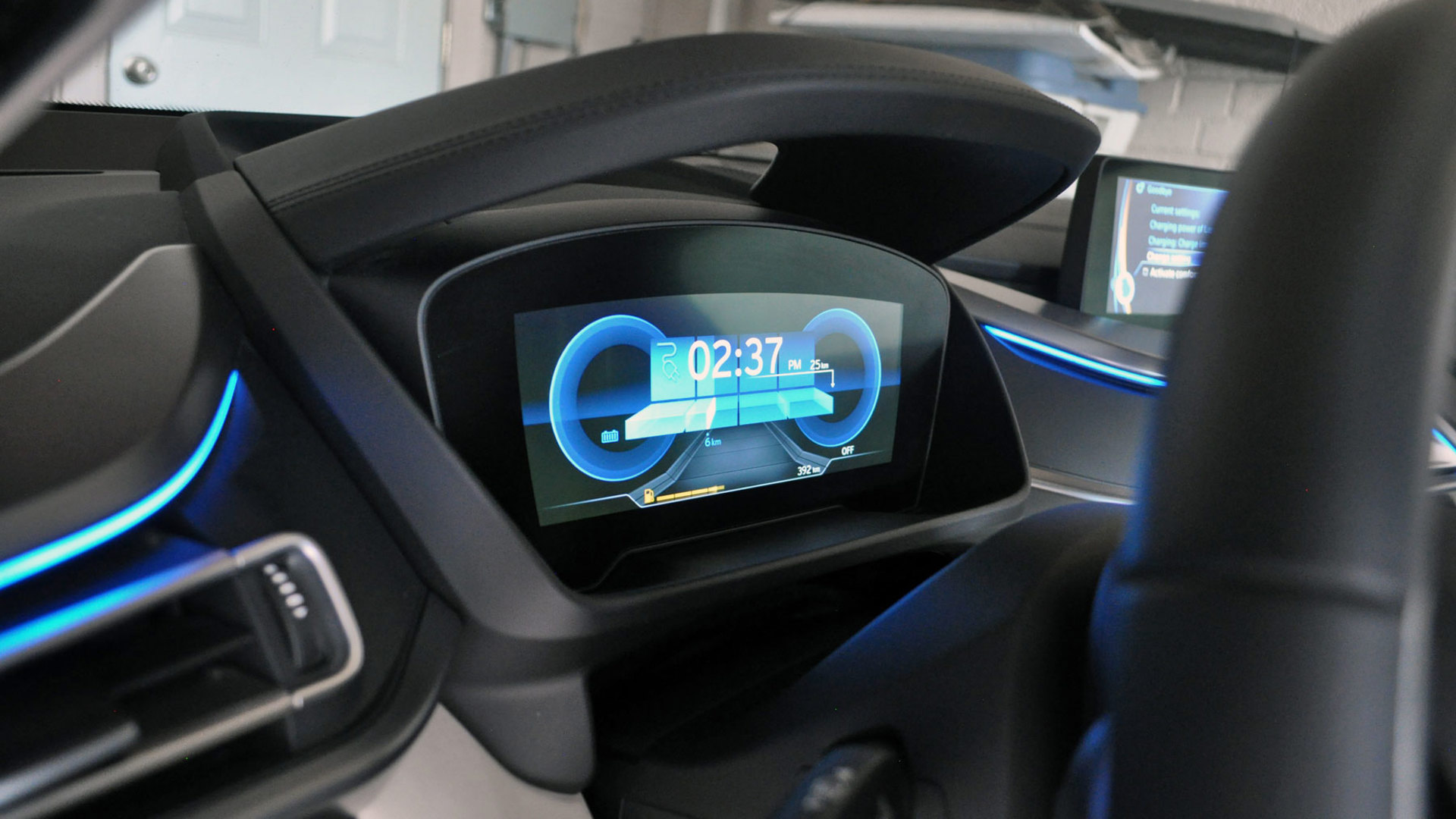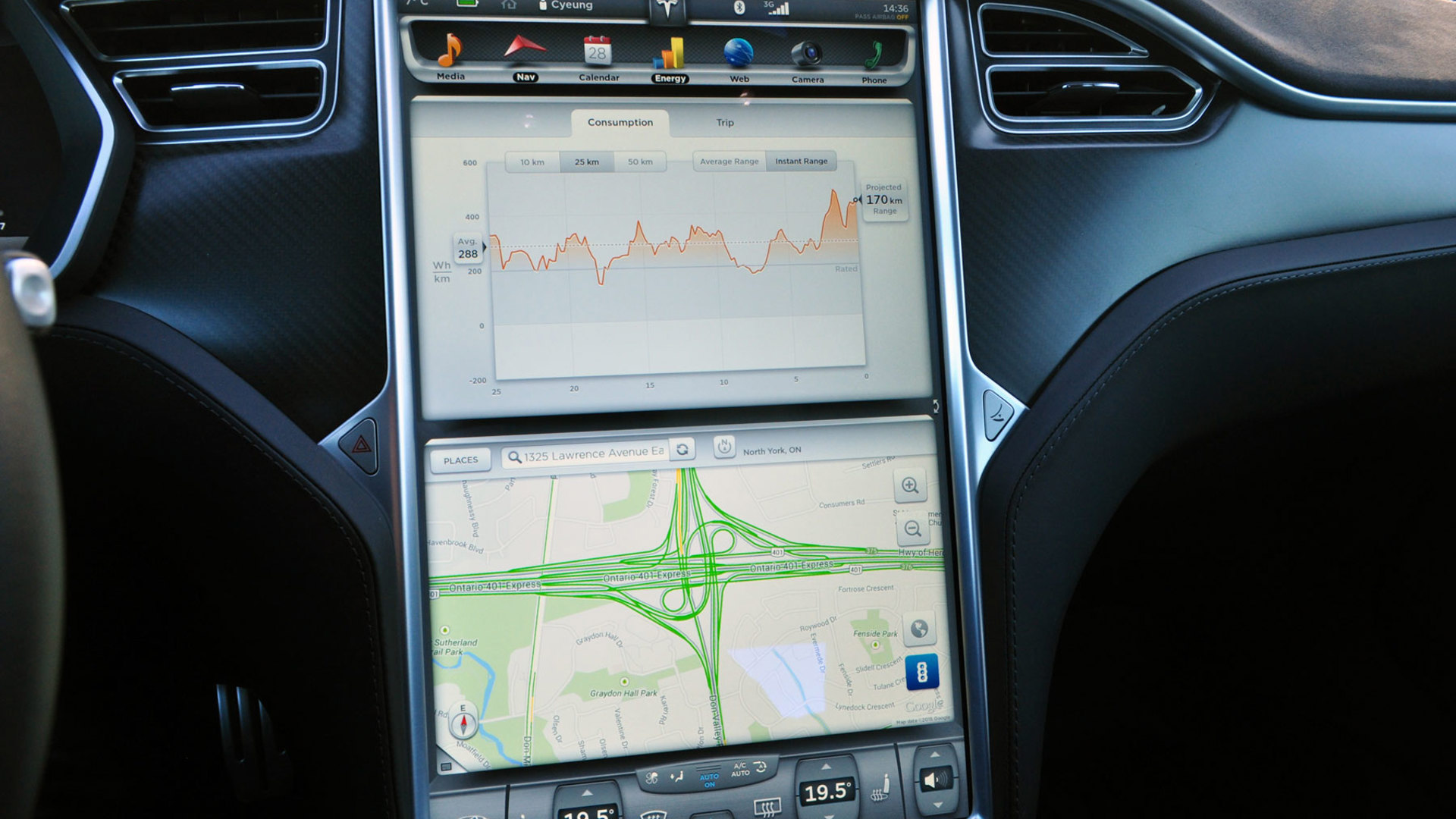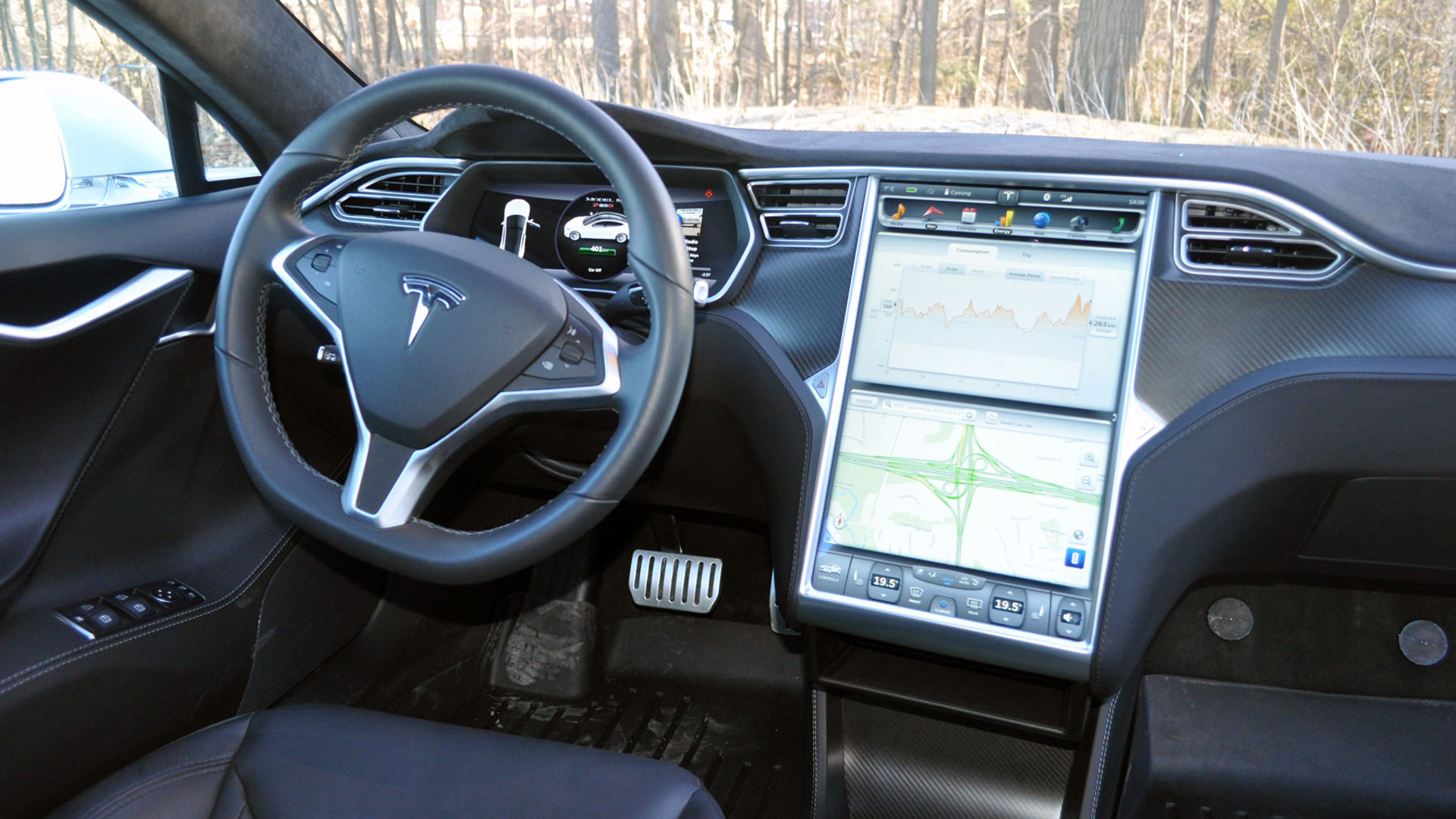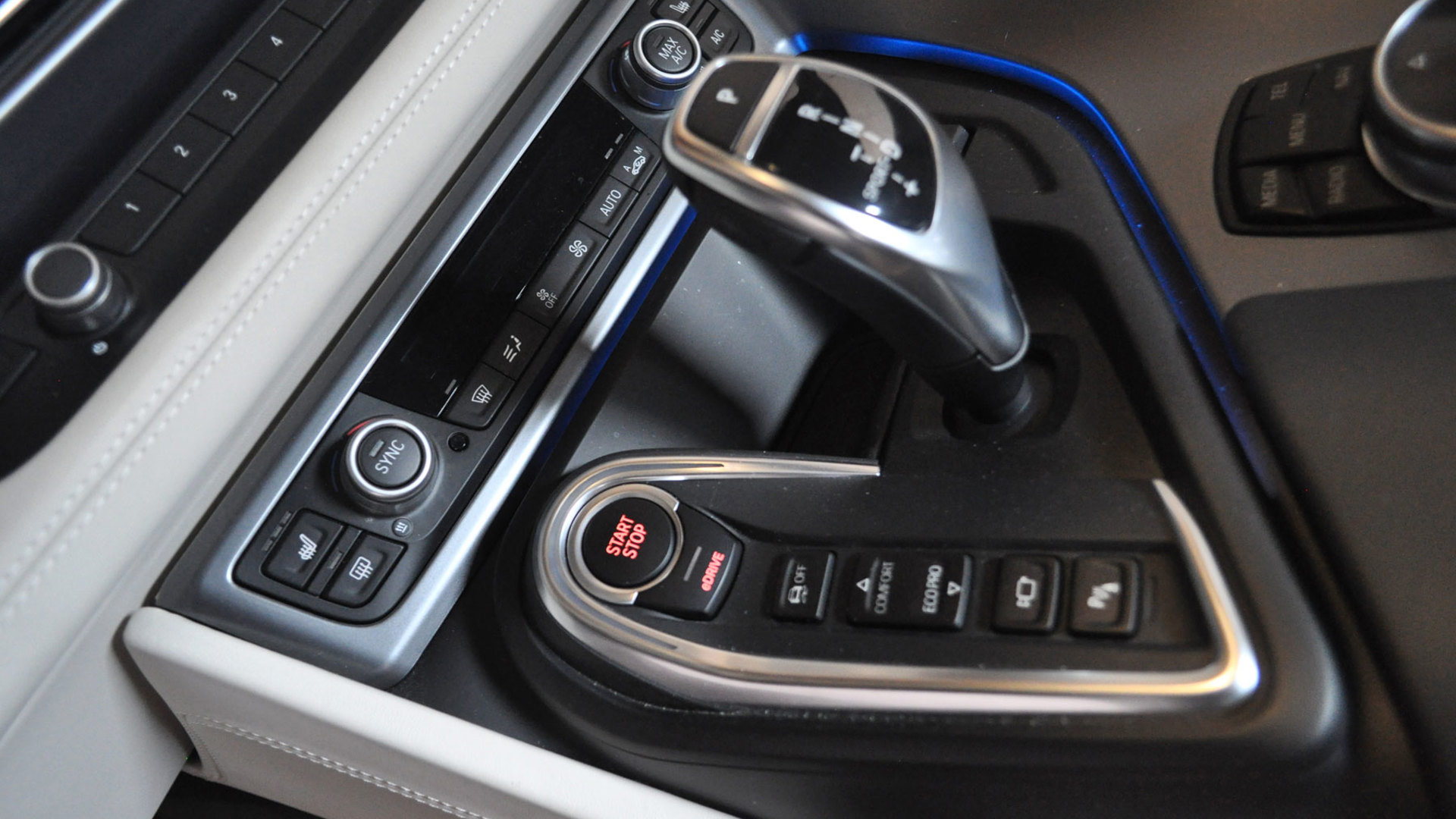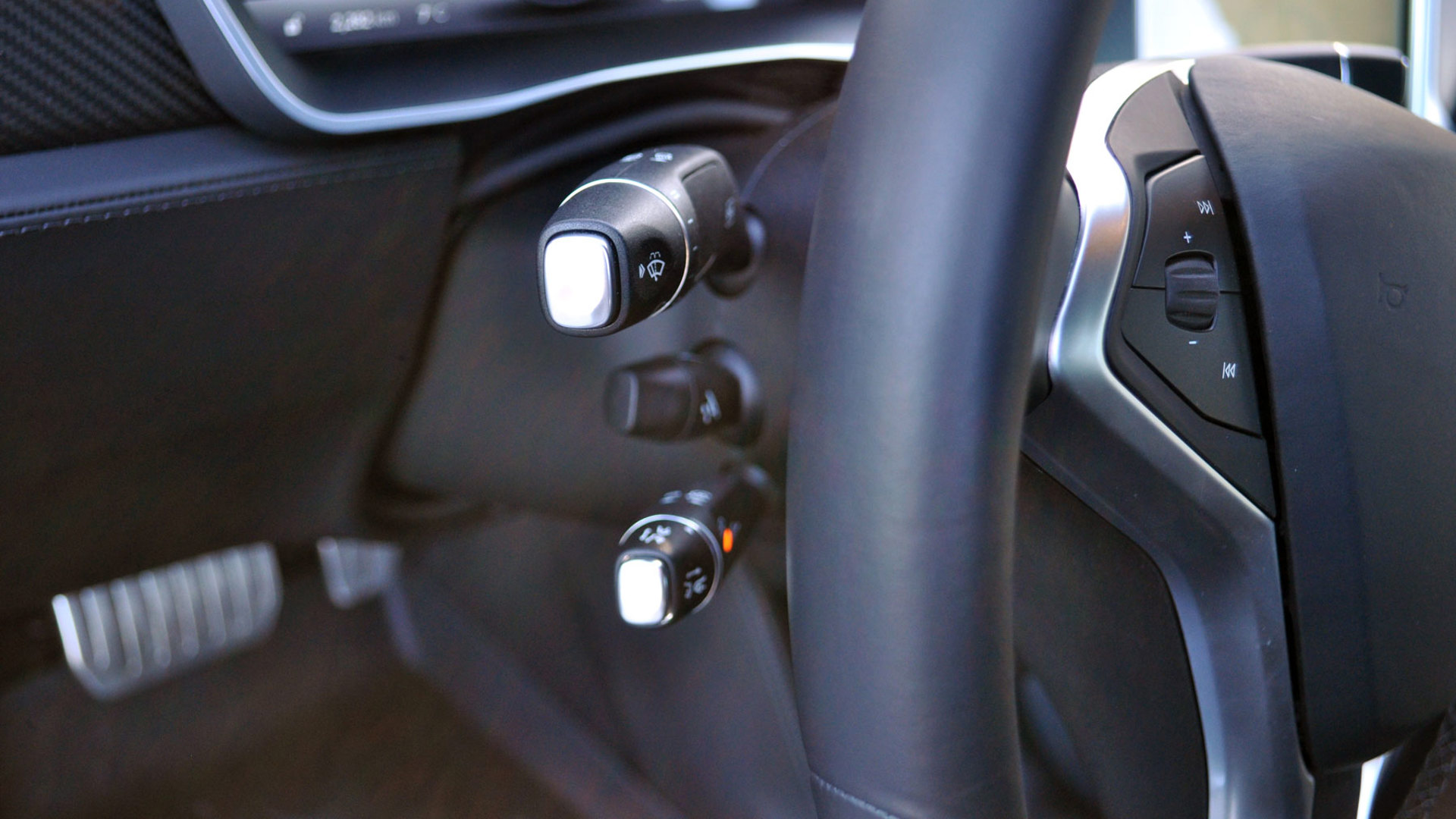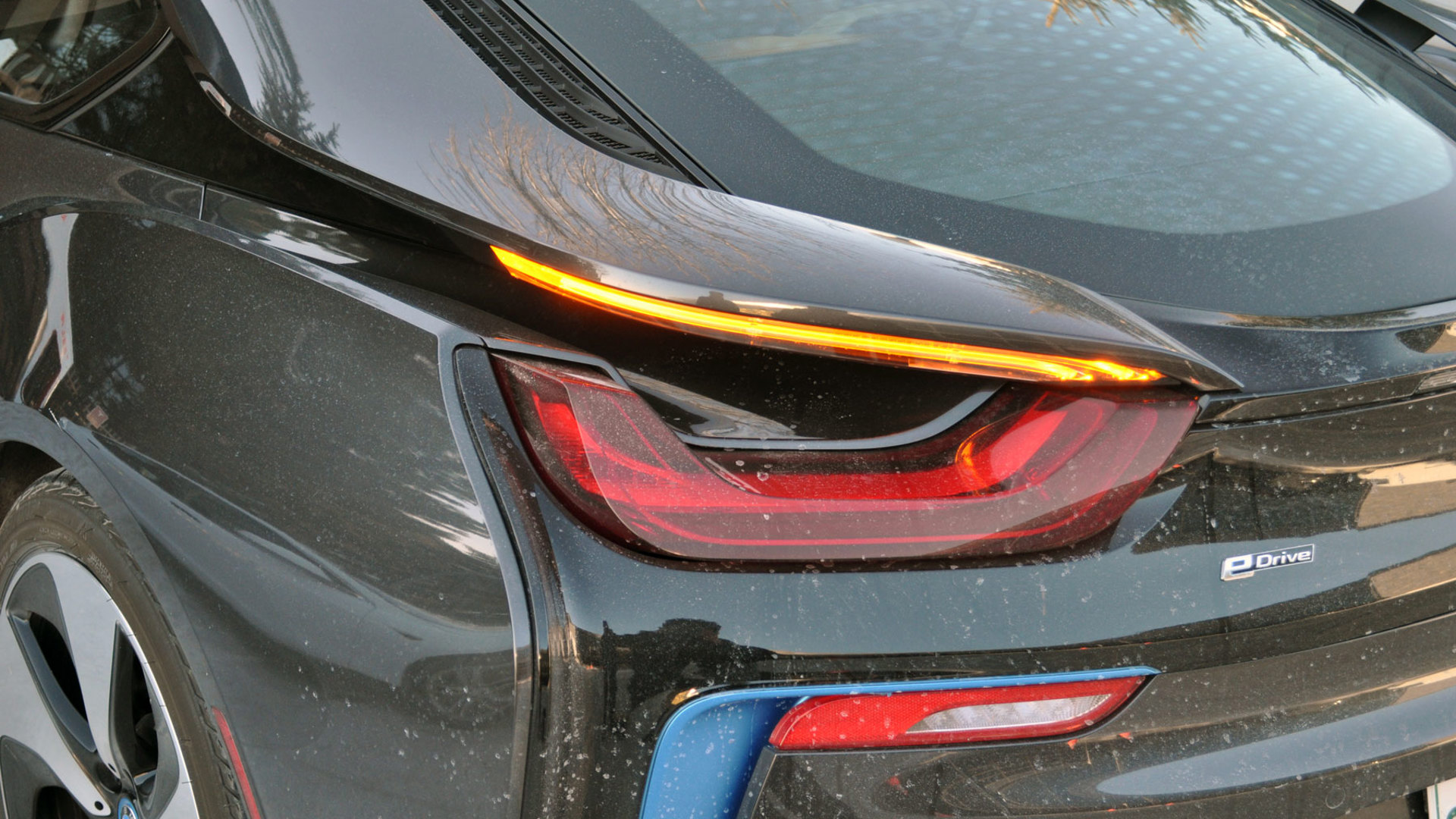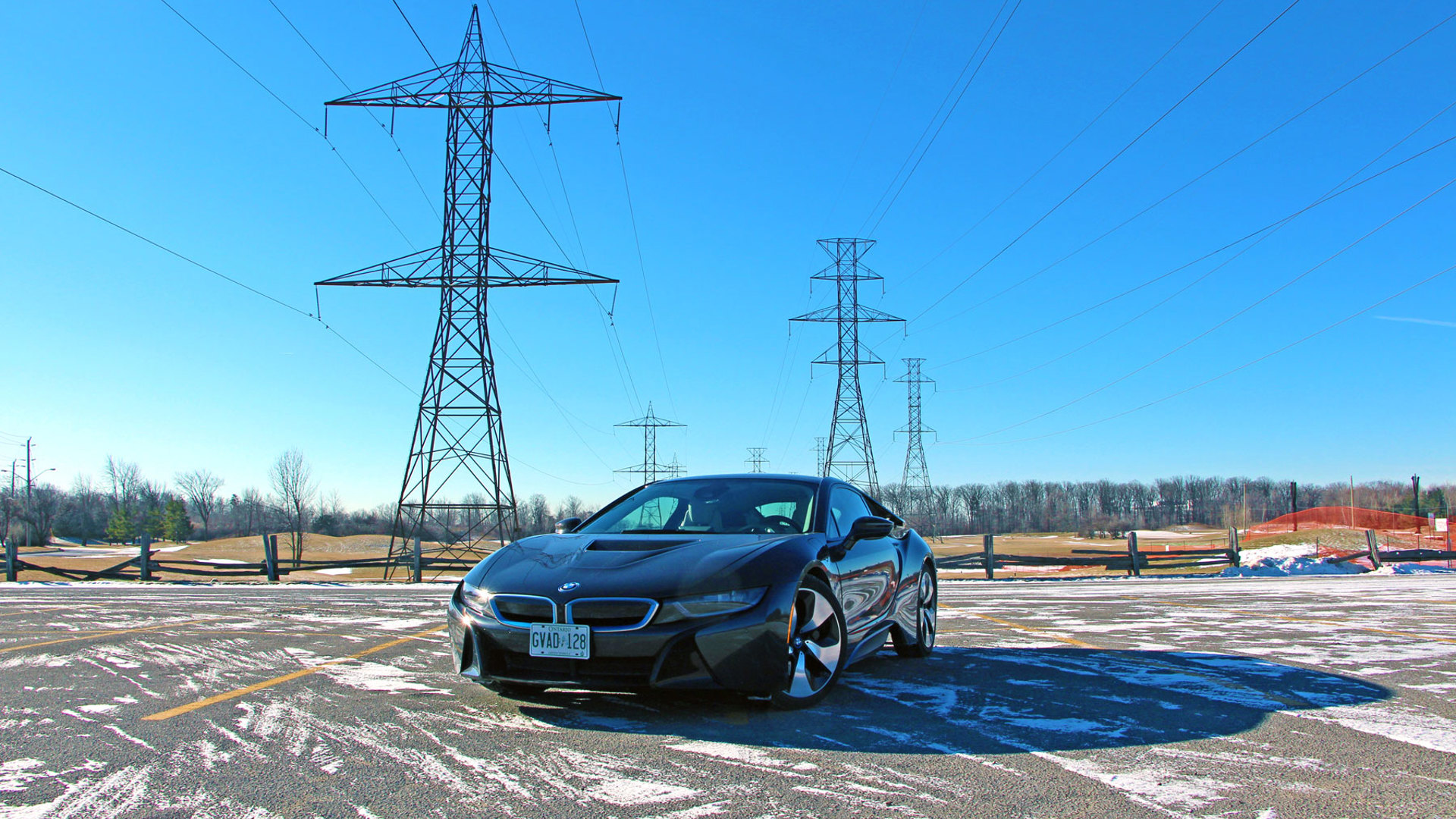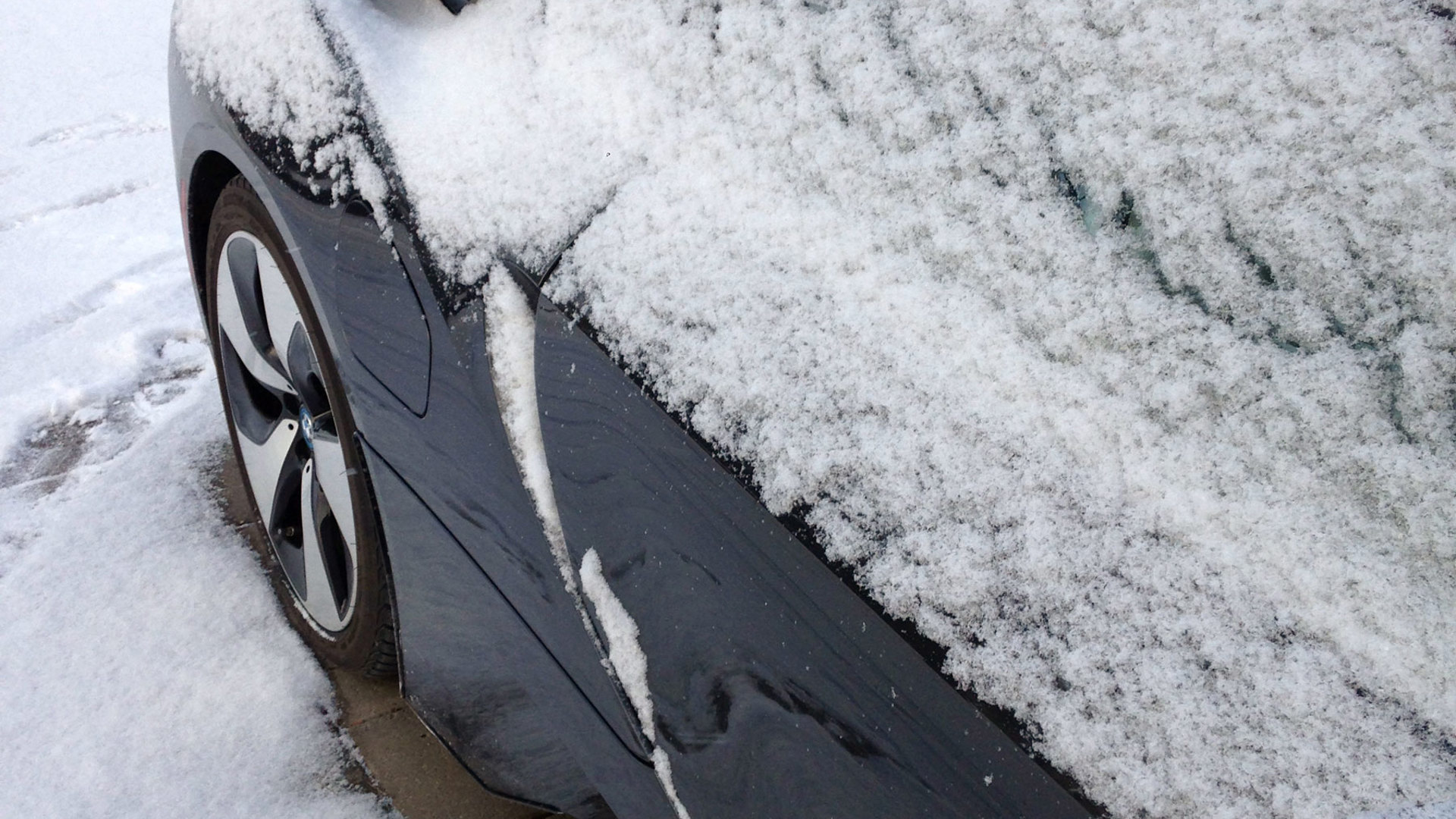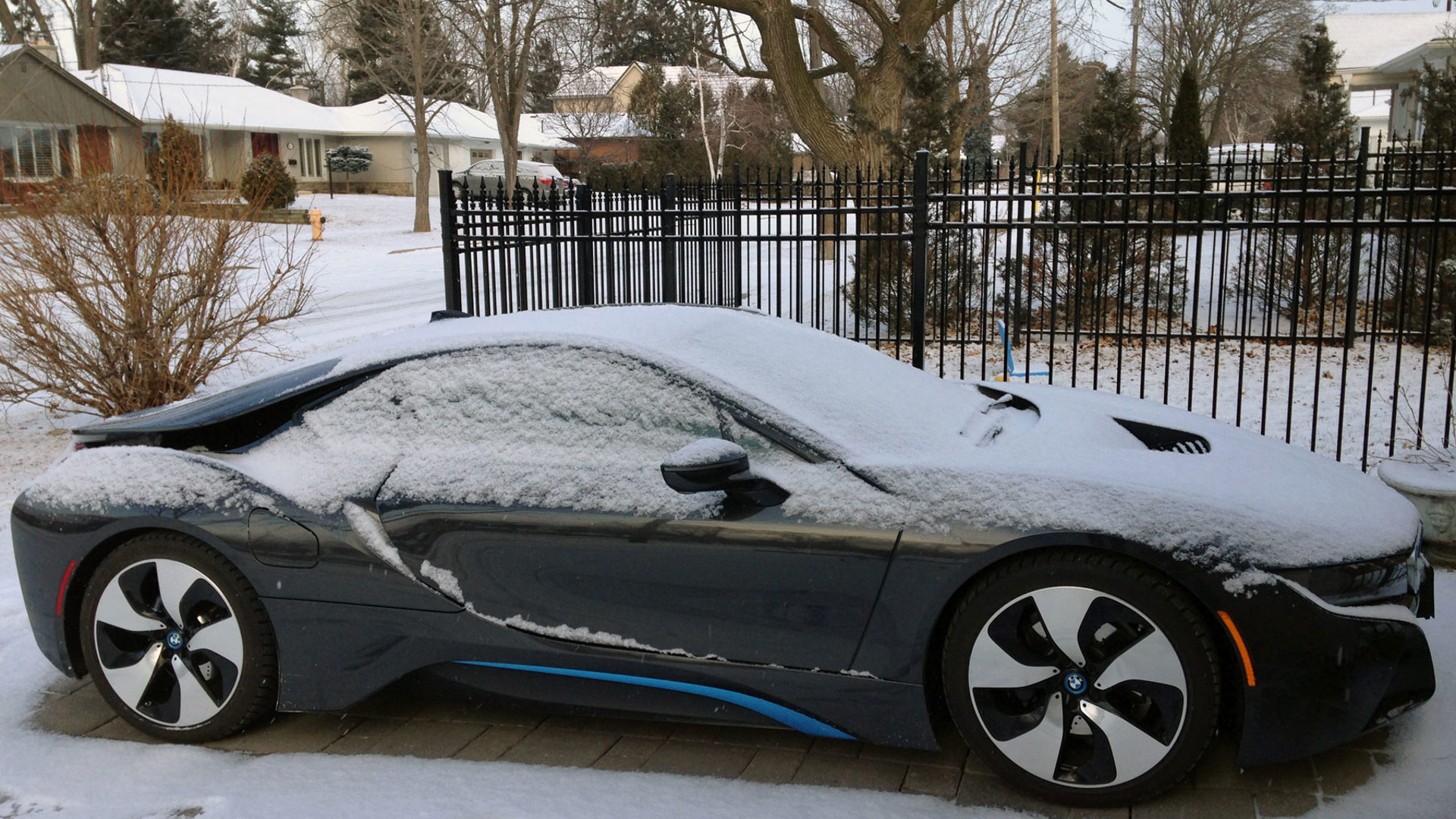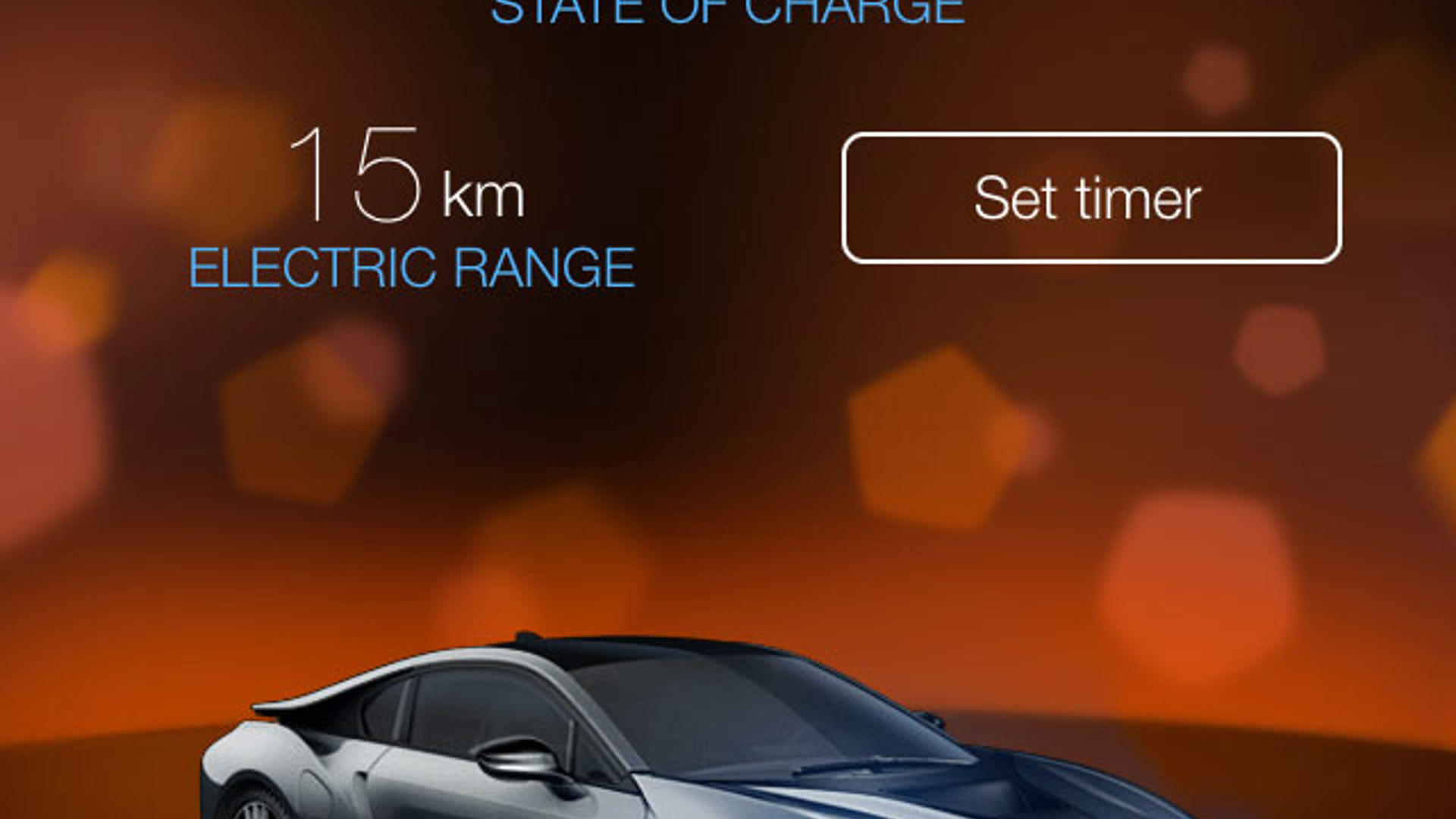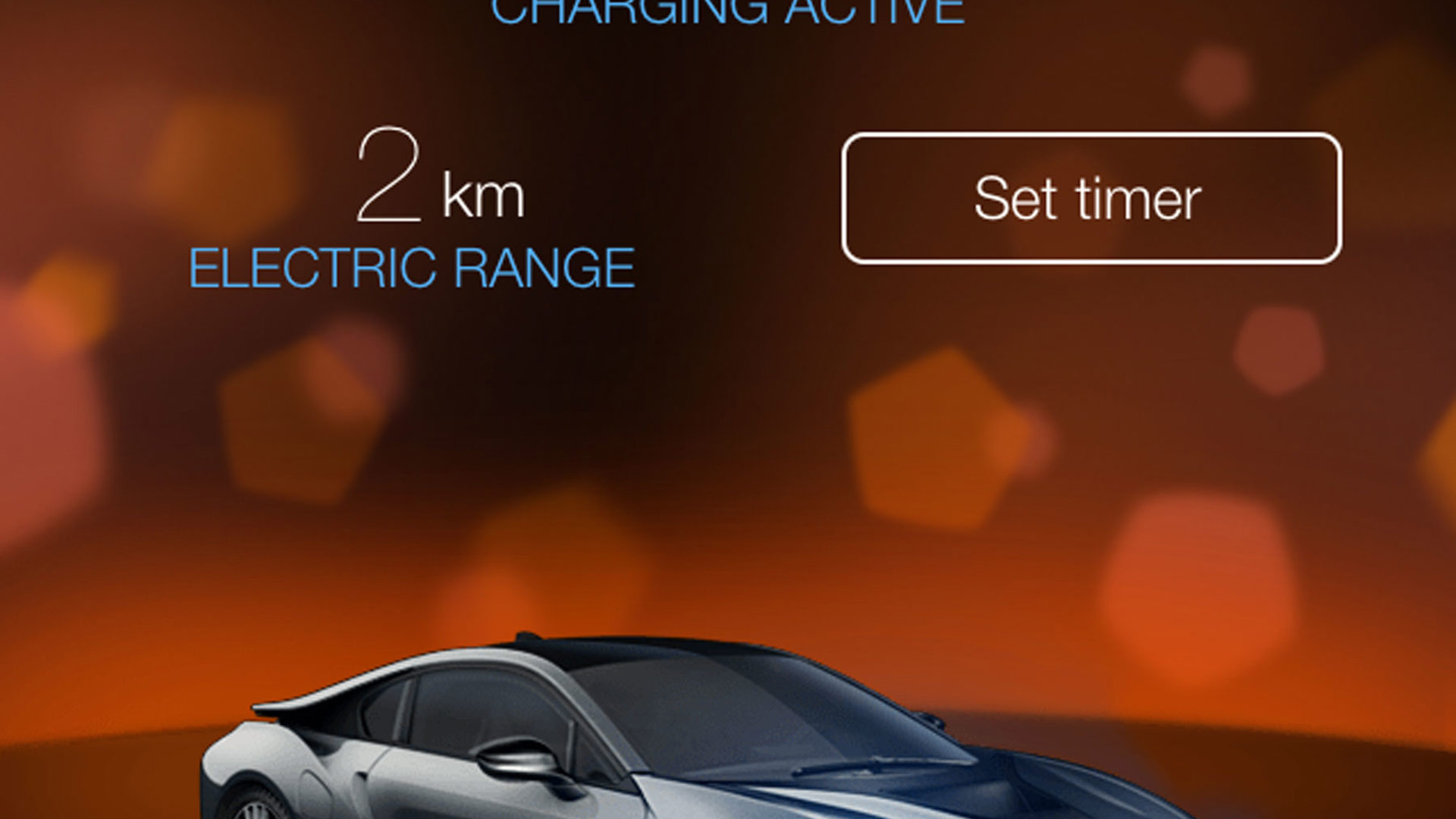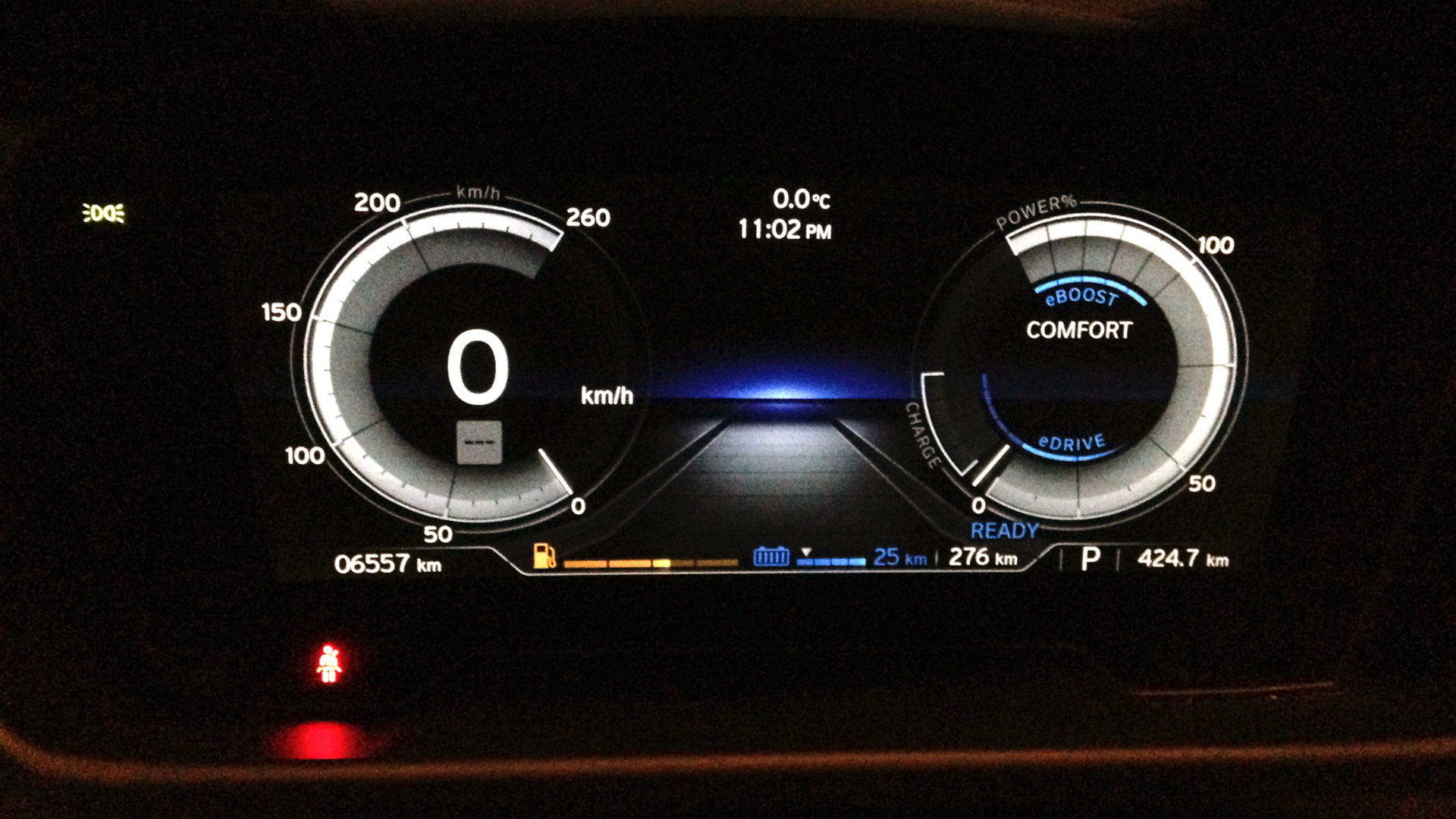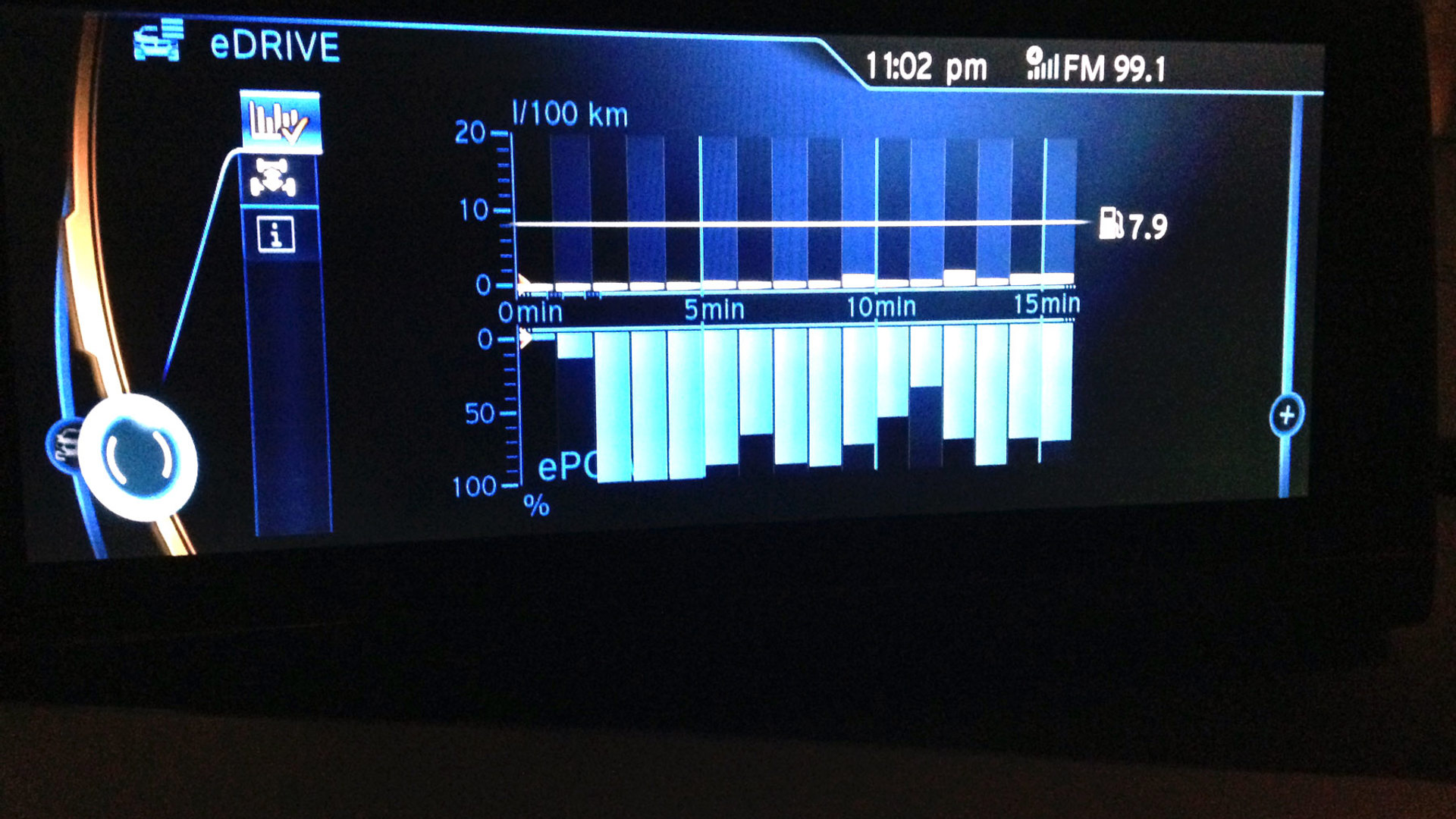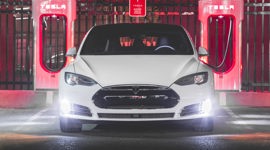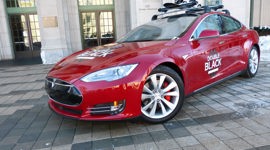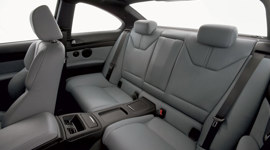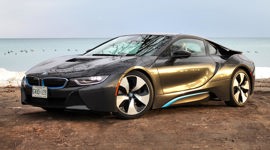Comparison Data
|
Base Price
$150,000
|
$120,100
|
|---|---|
|
Optional Equipment
$2,500 (Carpo Interior World: LED Adaptive Headlights, Carpo i ivory interior)
|
$14,750 (Tech package with Autopilot $4,700; Premium interior Package $3,900; 3,000; Smart Air suspension $2,500; Subzero weather package - $850; Ultra High Fidelity Sound - $2,800)
|
|
A/C Tax
$100
|
$100
|
|
Destination Fee
$2,095
|
$1,170
|
|
Price as Tested
$154,695
|
$151,420
|
Review and photos by Michael Bettencourt
Sometimes the planets all align in your favour, and for one afternoon of an already shortened time with the exotic BMW i8 plug-in sports car, a Tesla Model S with the new all-wheel drive system and “Insane”-rated 691 horsepower became available at the same time. These are two very rare plug-in automotive innovators, especially in deep winter in Canada.
The sky broke from its constant snow that week, too, at least for a few hours, as the weather gods seemed to smile on our unorthodox comparison: how does this practical yet super-quick upstart sport sedan stack up to BMW’s futuristic two-door sports car?
Price-wise, nearly identically, each landing within blinking distance of $150,000. Otherwise, they could hardly be more different, and it’s those differences that stood out by the end.
Design
There’s no doubt the BMW i8 was the A-list celebrity to the Tesla’s fresh-faced local TV reporter: both are good-looking, but the i8 had a visual tractor beam effect that the Tesla simply couldn’t approach. Whether at the gas station, stopped at a red light, or simply driving on the highway, heads and camera phones regularly swiveled in the i8’s direction.
There’s no doubt the BMW i8 was the A-list celebrity to the Tesla’s fresh-faced local TV reporter: both are good-looking, but the i8 had a visual tractor beam effect that the Tesla simply couldn’t approach.
Adding to the i8’s attention-drawing power were its big butterfly doors, which swing upwards and outwards to provide the largest passenger opening possible, but also to add to its visual drama. This is not always a positive statement, as unique details such as the rear “floating roof pillars” that don’t quite meet up with the upswing of the rear fender lines mean some angles can look somewhat odd, and its back end does look like it’s swallowing a Porsche 911 whole.
But these rear fender eyebrows also slickly integrate super-bright thin-strip rear LED curved turn signals. And though North Americans unfortunately aren’t offered the laser headlights available elsewhere, there’s no denying that this car will make the aforementioned 911 or even a usual showstopper like the Audi R8 look dated in comparison.
The Tesla P85D, on the other hand, barely looks different from the regular Model S, or from any Model S sold since it launched here in 2012. Its four-door coupe profile is sophisticated and handsome – and much easier to climb out of than the waist-high i8 – so it stacks up well visually against its luxurious gas-powered rivals such as the Audi RS 7 and Mercedes-Benz CLS AMG, if less aggressively than most of those rip-snortin’ V8, six-figure four-doors.
But in this company, there’s a familiarity about the Tesla’s shape that means it’s shoved aside like last week’s YouTube star.
Comfort/Versatility
Once the BMW i8’s doors open up and out, there’s a technique to climbing in without banging one’s head on that door, or hurling oneself in over the wide carbon-fibre reinforced plastic sill: butt in on the seat, then swing your legs in under the steering wheel. Stepping out is even tougher to do gracefully, but once you’re inside and stretch up to lower that door, it’s remarkable how light it feels coming down, yet still closes with a reassuring thunk.
The Tesla driver obviously has to face none of these body contortions, and has the very practical advantage of rear doors and a back seat with room for three adults, compared to the tiny +2 seating in the i8 that even had my seven-year-old complaining. All four of the Tesla’s doors come with their own much more subtle party trick of having the flush door handles pop out once the driver approaches with the remote. These worked flawlessly in our brief time with it, and Tesla owners have posted video of the door handles breaking through ice in winter.
One video also included that same iced-over Model S still being able to raise its snow and ice-covered power rear hatch, exposing another of many unique elements of the Model S: its ability to carry seven people, with the two rear-facing jump seats for kids, complete with special seat belts that preclude the need for booster seats. That’s a good thing, because the rear glass seemed worryingly close to our tall eight-year-old’s head in a road trip we did two years ago, so we likely wouldn’t put children much older back there, even though our kids still ask us now about when that car with the cool seats in the trunk is coming back.
This Tesla didn’t have the trick rear-facing seat option, but like all P85Ds, it does have slightly less “frunk” space then a rear-wheel-drive Model S, as the second motor up front eats up some of the cargo room near the front axle. Then again, either of the Tesla’s cargo spaces are huge compared to the i8’s miniscule 154 litre cargo area.
Just as lopsided as the BMW took the design plaudits, the Tesla absolutely dominates its zoomier plug-in counterpart in the more practical aspects of comfort and versatility.
Performance
With the i8, there’s no range anxiety, but there’s constant power anxiety.
Ahh, here’s where it’s a closer fight. The Tesla’s edge in comfort continues when you take these two out on the road. The P85D is dead silent in most instances, providing a smooth and easy comfort that could make a Bentley’s engine note seem crass by comparison. The i8 plug-in hybrid has a silent mode that allows for a relatively combustion-free ambiance, but that only lasts for an EPA-rated 23 km. During my cold and snowy four January days with it, realistic all-electric range was closer to 10-12 km, with the engine coming on before that if there is just too much draw on the relatively small traction battery, usually from heating the cabin.
And when that turbocharged 1.5L three-cylinder i8 engine kicks in to provide 228 horsepower to the rear wheels, as well as to charge up the battery, there’s no doubt it’s working hard. When combined with the front electric motor that provides the i8 with another 129 horsepower to the front wheels, providing the i8 with its all-wheel drive, there’s a grand total of 357 ponies and 420 lb-ft of torque on tap – perhaps not huge numbers in the world of exotic two-door sports cars, but fast enough to rip off 0-100 km/h runs in 4.4 seconds, according to BMW.
But you’ll want to keep a close eye on your battery gauge if you’re heading out with friends to show them the i8, because if you’ve depleted the battery by the time you arrive there, the acceleration available from the turbocharged three is fairly sedate, especially for a $150,000 sports car. Luckily, it’s easy to recharge the onboard battery by slapping the six-speed automatic’s lever over into Sport mode, where a few more revs are added, both for sportiness and extra juice for the battery. But it’s the loud and expensive way to charge your plug-in car, so many owners will prefer to find an L2 somewhere to charge.
So, with the i8, there’s no range anxiety, but there’s constant power anxiety.
The i8’s main advantage in the sporting arena over the P85D is in the BMW’s handling, flatter in aggressive cornering compared to the Tesla’s relatively porky body motions that make it feel like it’s just a little tipsy on aggressively taken off-ramps. And many will appreciate the greater driver participation of the i8, from the engine noise to steering that’s much more direct, and from shift paddles to the angry red glow in the tach that magically appears in Sport mode.
The Model S also has a Sport mode, but that’s the default driving mode. When you truly want to see what the P85D can do, there’s a magic setting in the driver controls panel for acceleration that must be changed to the aptly named “Insane” mode. Its violence ripping away from a stop can literally shock and awe driver and passenger alike, especially if you have the foresight (or suggestion) to disable the “creep” function first. From there, you can easily blast from a dead stop to “HOLY $$#!*$#!!!!” in ninja-like silence and speed. Its 0-96 km/h time of 3.2 seconds makes it the quickest accelerating four-door, ever, to that speed, says Tesla.
Its official stats put the P85D’s horsepower at 691 and its torque at a similarly monstrous 687 lb-ft, just below the 707 hp count of the Dodge Charger Hellcat, but well above the Dodge’s torque.
Tech Fun
These Insane and Creep (which allows the car to creep forward) modes are just a few of the quirky features available from the Tesla’s massive centre-mounted screen, which eclipses just about any other touchscreen in the business for size and functionality – it’s the only one that technically allows drivers to surf the internet from the driver’s seat, with no restrictions on entering GPS coordinates or addresses.
The BMW, on the other hand, has its own basket of tech-lover tricks inside, on top of the unique CFRP body structure and innovative powertrain, including a detailed head-up display and a BMW i smartphone app with the ability to map out navigation routes remotely then send to the car before hopping in, as well as the option to check on your i8’s charge, fuel status and a driving smoothness scorecard.
There are occasional foibles, too. For BMW, the most notable is the complete lack of AM radio, which would be a deal-breaker in my book. Apparently, the battery and the CFRP body don’t play together nicely, said a BMW rep, even though most stations can now be streamed through your phone to catch all the sports, news and local weather that are still on AM signals. But that seems like an overly complicated and data-heavy solution to a normally non-existent issue.
Fuel consumption
Though fuel economy has traditionally been way down on the list of priorities of exotic two-doors and super sports sedans, the fact that both of these performance vehicles get such spectacular fuel efficiency is one of their prime advancements. Even to folks with 150 large to spend on a car, each is a powerful statement that you don’t have to gulp through fossil fuels to appeal to performance enthusiasts. Green cars are not always about saving green, especially at this lofty end of the plug-in market.
So at the end of my four cold and often snowy days with the BMW i8, I averaged 7.9 L/100 km. That’s far from its combined 3.1 L/100 km average cited by the EPA, but it’s still close to its gas-only EPA figure of 8.4 L/100 km – and also much lower than that of a Honda Fit I tested in similar conditions that clocked in at just over 10 L/100 km.
For the Tesla Model S P85D, its official average of 2.5L equivalent per 100 km likely won’t mean much to its owners, simply because the all-electric five-door frees them from having to go to the gas station at all, as would any BEV. We picked up and charged this P85D at the Supercharger station located at Tesla’s large retail and service location in Toronto, its first retail location in the city outside of its boutique in upscale Yorkdale mall. The list of Canadian Supercharger stations in Canada keeps growing, with about nine as of mid-January, all of them providing unlimited free power to any Tesla owner with an 85 kWh battery, or those owners of the 60 kWh model who opt for the upgraded charging gear.
Though its official EPA range of 407 km will certainly be slashed in the deep freeze of winter, it will still offer hundreds of kilometres of fully electric instant power. And from a fueling cost perspective, the P85D is estimated to use US$3,000 less than the average new car in the U.S. over five years and about 24,000 km, $6,500 less than the Audi RS 7, and a whopping $8,500 less than the BMW M6 Gran Coupé, even at current fuel prices 40 percent lower than in early 2014.
Conclusion
In the end, there’s really no fair way to pick a winner from such two diverse yet inspired products. The Tesla Model S P85D is the hole shot hero car that no one expected, after the prior P85 already opened many eyes and wallets to a potential luxury car future that offered both zero-local-emissions motoring and driving excitement. The P85D gives the world a sneak peek at the upcoming Model X SUV, while blowing away preconceived notions about what electric cars being slow and somewhat ungainly looking.
The i8 is BMW’s vision on how it will help kick start a new automotive era, by offering plug-in vehicle alternatives to simple city runabouts, but using the advantages of electrification along with radical internal combustion downsizing in cars that consumers and kids alike can dream about. It is likely the first three-cylinder car you’ll find on a poster on some young car enthusiast wall, or more likely these days on the home screen of their favourite gadget.
But fair or not, if I had to pick the keys to one, I’d be reaching for the Tesla.
